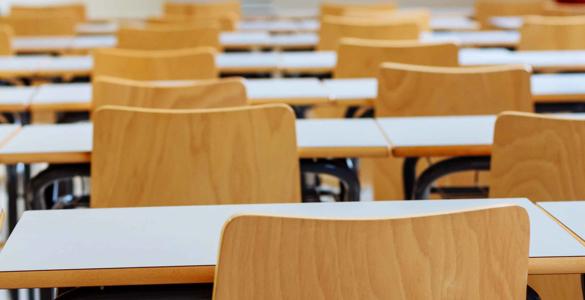The percentage of Welsh pupils missing school is still nearly double the level it was before the COVID-19 pandemic. School closures and the wider ongoing legacy of the pandemic appear to be having a long-term impact on how many children and young people are going to school. Steps taken by the Welsh Government are yet to reverse the downward trend.
Following our 2023 update, we relook at post-pandemic absence rates and possible reasons why they remain so high.
Why does it matter so much?
Going to school regularly has a strong impact on how children and young people progress and what they achieve. At a time when schools are implementing significant reforms, it’s clear that school standards are on the political agenda. Learner wellbeing is also an important factor, with the whole school approach to mental and emotional wellbeing intended as the basis for how pupils are supported.
The Children, Young People and Education Committee has scrutinised and reported on pupil attendance. In 2022 it found that there is a broad range of complex, often interlinked, factors that contribute to sustained absence. Some of these pre-dated COVID-19, but the pandemic also introduced new influences.
Which data?
The Welsh Government publishes data on both attendance and absenteeism. This article uses the annual absenteeism from secondary schools and absenteeism from primary schools data. It also uses the summary of absenteeism at school before and during the COVID-19 and associated data.
The pandemic and beyond
When the pandemic hit in March 2020, the Welsh Government suspended its collection and annual publication of attendance data for the academic year.
The Welsh Government moved to collect weekly absence data during the two years 2020/21 and 2021/22 (defined for statistical purposes as the ‘pandemic period’). This new approach was primarily intended to inform the ongoing response to the pandemic and monitor its impact.
By October 2022, this weekly data indicated that school absences had almost doubled from pre-pandemic levels, from 5.7% of school sessions missed from annual data collection in 2018/19 to weekly collection data of 9.4% in 2020/21, and 10.2% in 2021/22.
This may not be surprising given the disruption caused by school closures, illness and ongoing anxieties regarding COVID-19. But as time goes on, questions are being asked about why absence levels are not returning to ‘normal’:
- 2018/19: 5.7% of school sessions were missed
- 2019/20, 2020/21, 2021/22: no directly comparable annual attendance data due to the alternative weekly data collection methods during pandemic period.
- 2022/23: 12.5% of school sessions were missed in secondary schools and 8.5% in primary schools.
- 2023/24: 12% of secondary sessions were missed and data for primary schools is due to be published 12 December
Persistent absence
Estyn’s view is that “attendance rates across Wales remain a concern and the rates of persistent absenteeism have increased substantially”.
The definition of 'persistent absence' was changed in 2023, reducing the threshold considered as persistent absence from 20% to 10% of sessions missed by a pupil, with the aim of encouraging ‘earlier intervention’.
Welsh Government statistics show that:
- The percentage of persistently absent secondary school age pupils stayed between 19.0% and 15.9% between 2013/14 and 2018/19 (based on using the 10% threshold for all years).
- Following the COVID-19 pandemic, persistent absence has more than doubled between 2018/19 and 2023/24 and the percentage is now 37.1%, down from 40.1% in 2022/23.
Are some groups missing more school than others?
Primary and secondary: Secondary age pupils consistently miss more school than younger pupils. In 2022/23, 8.5% of primary school sessions were missed compared to 12.5% in secondary schools. Persistent absence data shows a similar pattern with rates of 28.9% for primary and 40.1% in secondary.
Age: Absence rates in secondary schools increase as pupils get older and the attendance gap at year 11 has widened since the pandemic. In 2022/23 absence rates increased among each year group, from 9.4% in Year 7 to 15.5% in Year 11. The picture is different in primary schools where absence rates are slightly higher in Year 1 than other year groups.
Free school meals: Pupils eligible for free school meals (eFSM) miss more school than their peers. Welsh Government statistics show that secondary school pupils eligible for FSM were absent for 20.1% of all school sessions in 2023/24, almost double the 10.5% of all sessions in 2018/19. In 2023/24 49% of these absences were unauthorised.
Additional Learning Needs: Pupils with Additional Learning Needs (ALN) have higher absence rates. In secondary schools, in 2023/24 17.2% of school sessions were missed by pupils with Special Educational Needs (SEN)/ALN provision compared to 11.2% without SEN/ALN provision.
Reasons for absence
Not attending school is often an indicator of a wide range of other factors, including unmet needs. Mental health needs, disability, bullying, learner travel, parental illness and some school policies such as access to toilet facilities were cited by parents in a report by Parentkind commissioned by the Welsh Government.
Estyn’s 2024 report on secondary school attendance identified a number of "important barriers" that schools face when tackling poor attendance:
- parental perceptions of the importance of good attendance;
- the capacity of schools to respond given the increased number of targeted pupils;
- the timing of school terms and holidays;
- increasing costs associated with school transport;
- lack of dedicated, long-term funding from the Welsh Government to improve attendance; and
- variation in the impact of support that schools received, for example from Educational Welfare Teams .
Welsh Government’s approach
The legal framework for school attendance underpins a range of other Welsh Government measures such as the All Wales Attendance Framework. In 2023:
- The then-Minister established a National Attendance taskforce to provide a strategic direction and set priorities. It has a programme of work including a ‘further analysis of data and statistics to identify patterns and geographical trends for improvement’. £2.5m is available to support projects ‘which arise from its work’.
- The Welsh Government also published Belonging, engaging and participating guidance aimed at ‘improving learner engagement and attendance’.
The new Cabinet Secretary for Education, Lynne Neagle MS, has acknowledged some of the exacerbating factors for school attendance.
- In May 2024, Lynne Neagle referred to families of pupils with ALN who no longer send their children to school because they don’t perceive that school can meet their needs.
- Then in June, while announcing that there would be no changes to the school year, the Cabinet Secretary referred to the scale of the problem, saying:
‘The persistent absence rates for free-school-meal children at secondary school are 50-plus per cent. That is an astonishing figure, and it is that which we have to address’.
Next week in Plenary the Cabinet Secretary will give a statement on improving educational standards in Wales. We may then find out the extent to which getting pupils back into the classroom is part of that agenda.
Article by Sarah Hayward, Senedd Research, Welsh Parliament
Senedd Research acknowledges the parliamentary fellowship provided to Sarah Hayward by the Economic and Social Research Council which enabled this article to be completed.






